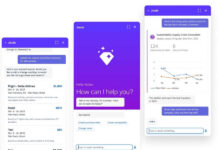
After several years of focus by vendors and consultants, and sometimes-grudging acceptance by HR departments, discussions about people analytics have turned pragmatic: HR leaders are more likely to embrace the idea that data has a role in their mission, practitioners are more likely to see the usefulness of learning the basics of data analysis, and vendors are thinking hard about ways workforce analytics can be made more accessible and more useful to HR, recruiters and line managers.
 Recently, Dave Weisbeck, Chief Strategy Officer of Vancouver-based Visier, wrote about “the six skills HR technology leaders must develop during 2017.” It’s a good read and, though he’s focused on HR technologists, he makes a solid case about why HR in general needs to be more intelligent in its use of data and technology, and more in-tune with its organization’s business goals.
Recently, Dave Weisbeck, Chief Strategy Officer of Vancouver-based Visier, wrote about “the six skills HR technology leaders must develop during 2017.” It’s a good read and, though he’s focused on HR technologists, he makes a solid case about why HR in general needs to be more intelligent in its use of data and technology, and more in-tune with its organization’s business goals.
None of that is particularly new. But his point that the work of HR technology leaders will become more complicated as new products and systems further disrupt the workplace is worth noting. Even more critical is his observation that, “in the future, HR Technologists will be focused on better integrating technology and people in order to design a better system of work.”
In truth, that sentiment should apply to technologists in every function. As systems become more sophisticated, their ability to actually break down the silos executives constantly rail against becomes more dynamic. Weisbeck argues that HR technology leaders “must be a master of analytics, able to tease out the most important details from increasingly bigger and more complex big data in order to make decisions that will have a strategic value to the business.” That’s true. “Just as importantly,” he continues, “you must be a master of workforce intelligence, and be able to use predictive models to improve workforce planning and routinely update these plans as the business and market changes.”
That’s true, too, but it doesn’t go far enough. There are several dangers here:
- First, that workforce analytics remains the purview of “HR technologists.” Basic data expertise should spread through HR generally.
- Second, that HR itself fails to recognize that workforce metrics and analytics are, by themselves, of limited value.
- Third, that the organization’s leadership–both functional and executive–fail to see the why analytics is most valuable when they’re drawn from cross-functional metrics.
Why People Analytics Is Just Getting Started
When people analytics became a buzzphrase several years back, HR leaders and practitioners were often accused of being behind the curve: They didn’t recognize what data could do for them. Lost in the discussion was the fact that few, if any, HR professionals had any kind of data-analysis in their backgrounds. At the same time, many experts argued that analytics would allow HR to operate more efficiently and create more effective workforce plans.
That was correct to a certain extent, but in the end HR data alone doesn’t paint a full picture of how a workforce is performing. You can look at time-to-hire and retention and come to some conclusion about whether your investment in recruiting is paying off as it should in terms of employee longevity, but not in terms of quality of hire, a metric that has to be based on performance. We can argue about who’s at the center of performance management–HR or the line manager–but in the end the actual data that measures performance is operational and financial.
Here’s a simple illustration: Let’s say it takes two months to identify, hire and onboard a software developer, who remains at the company for two years. You can look at how much it cost to hire them, and put a dollar figure on their 24 months of compensation, then make a judgement about the recruiting and hiring process’s return on investment.
However, with HR data alone, your analysis won’t include the revenue generated by the employee or the costs saved (or incurred) by their efficiency (or lack of it). In short, you don’t have an end-to-end view of the employee’s value to the company. HR numbers must be melded with business data if the workforce’s true impact on the organization is to be calculated.
For this to happen, HCM systems need to be tightly integrated with the technology that supports other functions across the organization. That’s good news for companies like Oracle and SAP, who provide enterprise-wide solutions capable of supporting everything from HR to the supply chain. Other vendors recognize this and often make the simplicity of integration with other systems a large part of their pitch.
It also raises the question: After all we’ve heard about people analytics, are companies embarking on the wrong course? Should they be thinking less about workforce data by itself, and more about how all facets of its performance impact the business’s other functions, and thus the whole? Marketing analytics details the effectiveness of a particular campaign or a wider strategy, but they don’t determine the relative value of your marketing team. Production data provides you with an idea of whether your manufacturing line runs cost-effectively, but doesn’t indicate whether hiring a different type of worker would improve efficiency.
The upshot is somewhat ironic. The power of people analytics truly emerges when combined with other data. When considering long-term strategies, executives should think hard about organization-wide data science, not just HR data science. From a technology point of view, this makes systems integration even more critical a factor than it is today.
Copyright: steverts / 123RF Stock Photo















